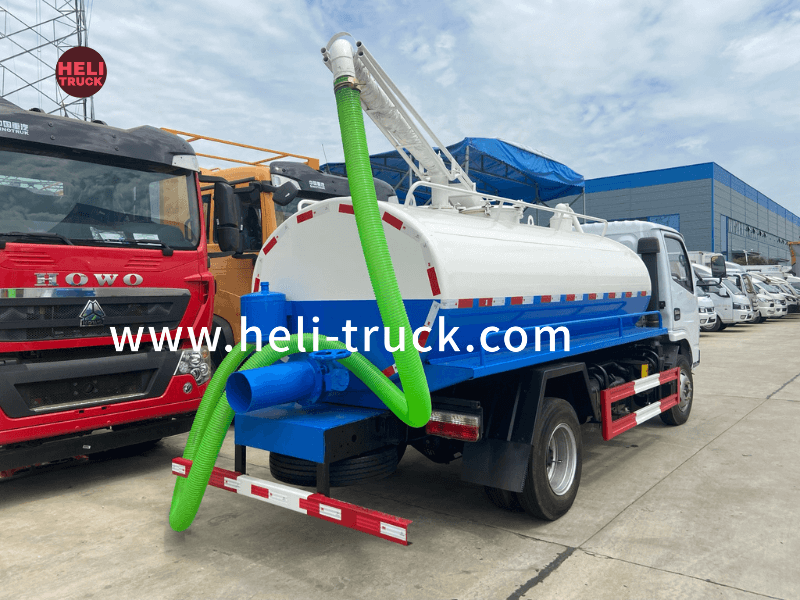Introduction
Garbage compactor trucks play a critical role in waste management systems worldwide. These specialized vehicles are designed to collect, compact, and transport various types of solid waste efficiently. One key factor that influences the effectiveness of a garbage compactor truck is its loading capacity. Understanding the loading capacity of these trucks is essential for maximizing efficiency in waste collection and disposal operations. In this article, we will delve into the importance of garbage compactor truck loading capacity, factors that affect it, methods to optimize loading capacity, and the benefits of maximizing efficiency in waste management processes.
Importance of Garbage Compactor Truck Loading Capacity
Loading capacity refers to the maximum amount of waste that a garbage compactor truck can collect and transport in a single trip. The loading capacity of a compactor truck is a crucial factor that directly impacts the efficiency of waste collection operations. Trucks with larger loading capacities can collect more waste per trip, reducing the frequency of trips required to empty the vehicle. This results in cost savings in terms of fuel consumption, labor, and vehicle maintenance.
Furthermore, optimizing loading capacity helps in improving the overall productivity of waste management operations. By maximizing the amount of waste collected in each trip, compactor trucks can cover larger service areas and collect more waste within a given timeframe. This is particularly important in urban areas with high population densities and large amounts of waste generation.

Factors Affecting Garbage Compactor Truck Loading Capacity
Several factors influence the loading capacity of garbage compactor trucks. Understanding these factors is essential for operators and fleet managers to make informed decisions regarding vehicle selection, route planning, and operational efficiency. Some of the key factors affecting loading capacity include:
1. Vehicle Size and Design: The physical dimensions and design of a garbage compactor truck play a significant role in determining its loading capacity. Trucks with larger hopper capacities and compaction chambers can accommodate more waste, allowing for higher loading capacities.
2. Compaction Ratio: The compaction ratio of a compactor truck refers to the reduction in waste volume achieved through the compaction process. Trucks with higher compaction ratios can compress waste more effectively, increasing the overall loading capacity of the vehicle.
3. Waste Density: The density of the waste being collected also impacts the loading capacity of a garbage compactor truck. Heavier and denser waste materials take up less space, allowing for more waste to be loaded into the truck.
4. Route Efficiency: Efficient route planning plays a crucial role in maximizing the loading capacity of compactor trucks. Optimizing collection routes based on waste generation rates, traffic conditions, and service areas can help in minimizing travel time and maximizing the amount of waste collected per trip.
Methods to Optimize Garbage Compactor Truck Loading Capacity
To enhance the loading capacity of garbage compactor trucks and improve operational efficiency, several strategies can be implemented. These methods focus on maximizing the amount of waste collected in each trip while ensuring safe and effective waste compaction. Some effective ways to optimize loading capacity include:
1. Regular Maintenance: Ensuring that compactor trucks are well-maintained is essential for optimizing loading capacity. Regular inspections, maintenance checks, and servicing of compaction systems and hydraulic components can help in maximizing the efficiency of waste compaction and collection.
2. Proper Waste Segregation: Segregating waste at the source and collecting different types of waste separately can help in optimizing loading capacity. By sorting waste into recyclables, organic waste, and general waste categories, compactor trucks can be loaded more efficiently, reducing the need for multiple trips to different disposal facilities.
3. Efficient Compaction Techniques: Training operators in efficient compaction techniques can significantly impact the loading capacity of garbage compactor trucks. Proper compaction methods, such as layering waste evenly and compacting waste in batches, can help in maximizing the amount of waste that can be loaded into the truck.
4. Real-Time Monitoring Systems: Implementing real-time monitoring systems on compactor trucks can provide valuable data on waste collection activities. Monitoring factors such as fill levels, compaction ratios, and route efficiency can help in optimizing loading capacity and improving overall operational efficiency.
Benefits of Maximizing Efficiency in Waste Management Processes
Maximizing the efficiency of garbage compactor trucks through optimized loading capacity offers a wide range of benefits for waste management systems and communities. Some key advantages of enhancing operational efficiency include:
1. Cost Savings: By reducing the number of trips required to collect and transport waste, maximizing loading capacity can lead to significant cost savings in fuel, labor, and vehicle maintenance expenses.
2. Environmental Impact: Efficient waste collection and disposal practices contribute to reducing the environmental impact of solid waste management. By minimizing the carbon footprint associated with waste collection operations, communities can work towards achieving sustainability goals.
3. Improved Service Levels: Maximizing loading capacity enables compactor trucks to collect more waste within a shorter timeframe, leading to improved service levels for residents and businesses. Timely and efficient waste collection services contribute to a cleaner and healthier living environment.
4. Enhanced Productivity: Optimizing loading capacity enhances the productivity of waste management operations by enabling compactor trucks to cover larger service areas and collect more waste per trip. This increased productivity translates to better resource utilization and operational effectiveness.
Conclusion
Garbage compactor truck loading capacity plays a crucial role in the efficiency and effectiveness of waste management operations. By understanding the factors that influence loading capacity, implementing optimization strategies, and maximizing efficiency, waste management systems can achieve cost savings, environmental sustainability, improved service levels, and enhanced productivity. Investing in garbage compactor trucks with adequate loading capacity and adopting best practices for waste collection and compaction can lead to significant benefits for communities and waste management organizations. By prioritizing efficiency and optimizing loading capacity, waste management systems can work towards achieving their waste reduction and sustainability objectives.
